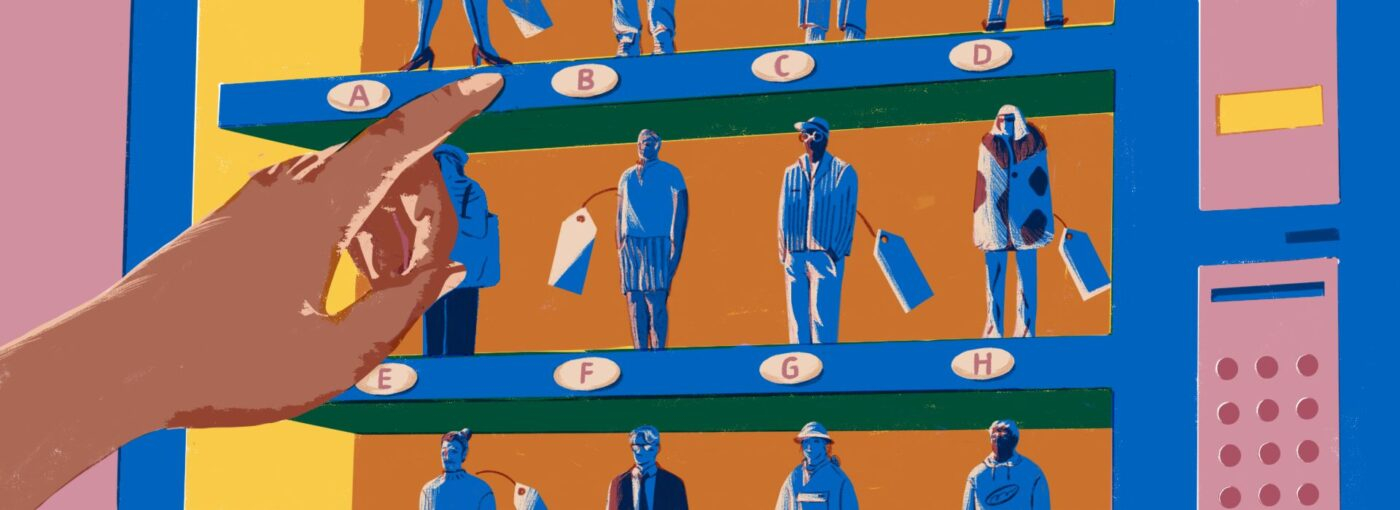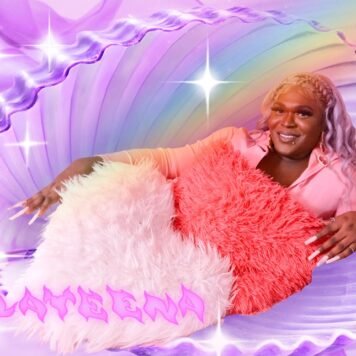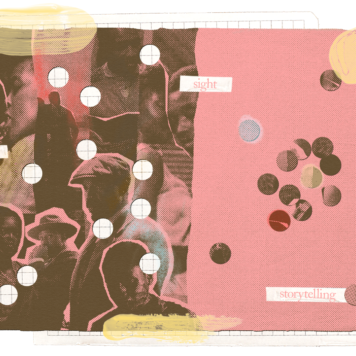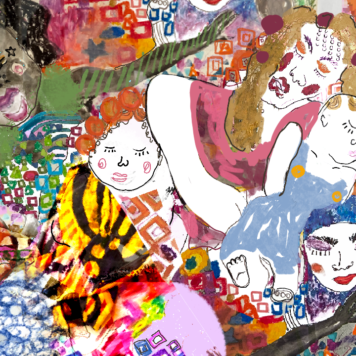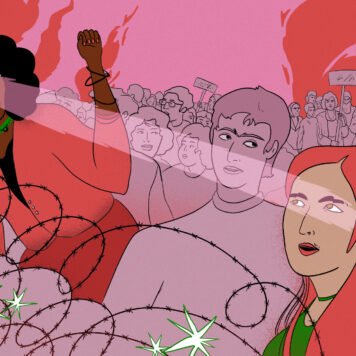Prompted by a BuzzFeed quiz designed to find out which type of Gay I was, I decided to put down my thoughts on the topic of queer identities. The quiz asked me about my body build, sexual position, body hair, types of men I was attracted to, and so on. There were so many factors to consider and so many different results possible that it made me feel like I was solving an algebraic equation that had more variables than I could even anticipate. When I was younger I might have imagined there being x and v, age and sexual position, but since then I’ve been introduced to u, bodily hair, followed by z, body type, and so on in order to understand y, identity. However, now it seems there are so many variables to the equation: X= young, R= older, U=hairy, Z= hairless, I= top, O=bottom, V=verse, S=submissive, D=dominant, M= Muscular, T=slim, A= age where (A2-A1) = type of relationship, F= frequency of sexual activity, and so on and so on. Eventually, I found myself trying to solve the equation of type Identity Y = 2R + Z +V+0.25O+1/2S +1/2D+T+5A(28-23)+0.2F. Based on the outcome, I would be given a specific role to play. A type of gay to be. It was my socially understood position in queer society. Free of ambiguity; yet again stereotyped.

I found it hard to find a personality on this quiz that felt like me. Of course, these quizzes are meant purely as entertainment, but this struggle extends beyond a quiz. I’ve continually struggled to identify myself with any particular queer identity or feel like any of the labels were an accurate enough representation of myself. Even the simple identity of “gay” assigned to me sometimes feels insufficient. This identity does not encompass who I am to the entirety, and yet it encompasses enough for the person who inquired about my sexuality to be reassured as to where I stand. I suppose it is normal to require these social cues and titles in order to quickly evaluate how to classify an individual, but as we continue to drive this logic to the extreme, we define a person via characteristics that provide a brief summary of who they are. Instead of reading the whole book when the synopsis proves to be insufficient, we make the synopsis longer. Where do we stop? When do we reverse the thought process and remove all the variables? Is it possible to avoid them or to be less defined by them? To understand that there is no quantity that can properly represent an individual?
These models of behaviour act as the foundation for the performative nature of our sexuality. I wake up an individual, and then I embody the character that corresponds to my preferences; twink, bear, muscle head, etc. The outcome of this is that I have become my sexuality, but my sexuality in itself is performative. It is guided and restricted by these equations society has used to simplify an individual rather than to understand them. I do not own my sexuality and in turn I do not own my identity. It comes as no surprise then why it is difficult to feel connected with individuals, as people have become characters, and identities have become stereotypes.
Perhaps the permutation of dating apps has accelerated, or placed this phenomenon on steroids. Signing up to an app, you again have the choice to select which type of gay you are, top, bottom, bear, otter, daddy, twink, hunk, and so on. However, unlike in the real world where these labels can be broken down through human interaction and time, online, they become identities and fantasies to be fulfilled. I look for the key words and titles that fulfill my specific desired type at the moment or fantasy, and likewise am contacted by individuals whose checklist I meet. Better yet, if you pay, you can filter out individuals who don’t meet your criteria so you never even see them in your search. When the two coincide, we meet and act out a mutual fantasy without ever asking “who are you?”.
More than the encounters that are created through these apps, all those that never occur seem of equal importance. It seems that the sexual identity the community assigns to you also determines the type of partner you should be looking for. Before the complexities of bear and cub, daddy and Twink, is the simplest of dynamics in gay culture; Top and Bottom. It’s a cliched idea, how homosexual relationships repeat heteronormative practices, but it continues to define many of the encounters on dating apps. Someone must penetrate and someone must be penetrated. More than once I’ve heard comments made of how unfortunate it is when two people get along so well, until they find out they are both bottoms or they are both tops and the relationship breaks apart. These apps accelerate that process by emphasising this heteronormative binary of top and bottom, sometimes forcing you to select one or the other. As someone born in the internet era I can only imagine, but it feels as though there was more room for this binary to be less definite in the past. Perhaps the natural process of intimacy and getting to know an individual before becoming sexually involved allowed their identities to overcome immediately perceived sexual incompatibilities leading to a deeper sexual and personal connection that might have otherwise been left unexplored. With dating apps, incompatibility is seen as rigidly defining potential partner prospects, leaving those incompatible out of the option pool. It seems as though apps are creating more missed connections rather than not, but what we give up in intimacy, we gain in economising time, in reaching more immediate satisfaction than ever.
Sometimes I wonder if this is not to blame in part for a growing loneliness in the queer community, or at least my own. It feels that despite the newfound ease with which one can interact and meet another individual, playing at sexuality has only left me more disconnected. Psychoanalyst Erich Fromm theorized in his 1956 book The Art of Loving, that from the moment we are born to the moment we die we are all looking to remedy the human condition of loneliness; we are wanting love, and we are wanting connection. However, once we have filled out these role playing fantasies, and when the physical euphoria that comes from climax fades, we realize that we are even lonelier than before. Standing besides ourselves, all we’ve achieved is an interaction between characters. Despite a body coming as close to you as physically possible, you have in fact not touched anyone. You’ve merely searched a categorical fantasy amidst potential partners online, agreed to a meeting where you know the beginning, middle and end, and then experienced sexual satisfaction. Latino Boy, Asians, Bareback, Threesome, Public, Young & Old; categories that can be applied equally to how you find your next hook up. Can it be considered real life porn? We’ve commodified bodies and stripped them of identity to create a cycle of consumption limiting reality to fantasy. However, unlike porn, this character play comes with the dissatisfaction and disillusion that, at the end of it all, you are still just as misunderstood and alone as when you began, if not more.

Fromm, E. (2088). The Art of Loving. New York: Continuum Pub.
Henry, B. (n.d.). Which Gay Tribe Do You Belong To? Retrieved January 19, 2018, from Buzzfeed
We’re hugely excited to introduce our latest collaboration; a takeover from B.G.U zine, a Tokyo-based queer, feminist zine and collective, that empowers individuals and fights for change. This piece is the second in a four-part series which will see shado re-publish 3 articles from their archive with new accompanying imagery commissioned by us. Read the first piece HERE
See more of Yuzhen’s work on instagram HERE

